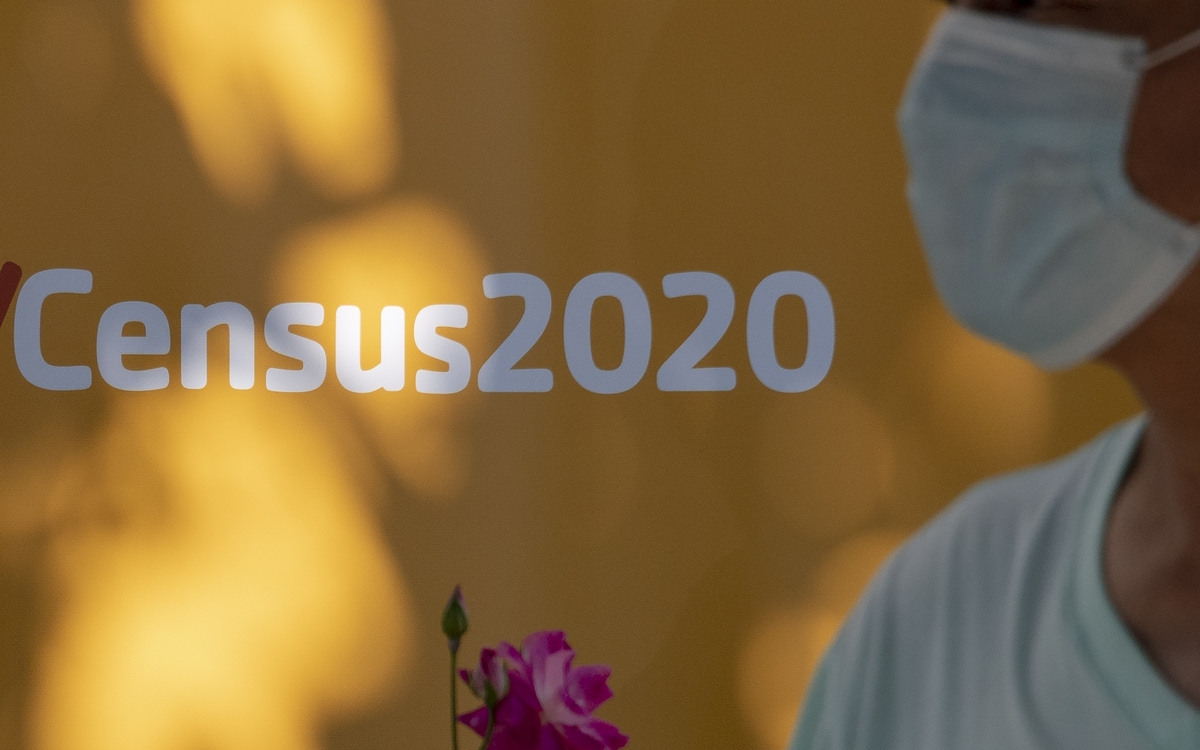A person wearing a mask walks past a sign encouraging people to complete the 2020 census in Los Angeles.
Robyn Beck/AFP via Getty Images
hide caption
toggle caption
Robyn Beck/AFP via Getty Images


A person wearing a mask walks past a sign encouraging people to complete the 2020 census in Los Angeles.
Robyn Beck/AFP via Getty Images
The last national head count of people living in the United States may have missed a substantial share of residents who are not U.S. citizens, according to a Census Bureau report released last week.
The finding comes after years of concern over census interference by former President Donald Trump’s administration that likely discouraged many unauthorized immigrants, green card holders and other noncitizens from taking part in the count in 2020.
The Constitution requires a once-a-decade tally of the “whole number of persons in each state.” The population numbers are used to reallocate congressional seats and Electoral College votes, as well as guide some $1.5 trillion a year in federal money to local communities for public services.
But the bureau’s estimated tally of the U.S. population as of Census Day 2020, based on a simulated tally involving administrative records from government and third-party sources, was 2.3% higher than the count’s actual result of 331.4 million.
That gap, researchers found, was likely driven by noncitizen residents who are missing from the agency’s count, especially those with “unknown legal status.” About 19.7% of noncitizens tallied in the simulation using administrative records had addresses that could not be matched with those counted in the 2020 census.
That raises “the possibility that the 2020 Census did not succeed in collecting data for a significant fraction of noncitizens residing in the United States,” the bureau’s report says.
Earlier research by the bureau warned of a scenario like this in light of the Trump administration’s failed push to add to the 2020 census forms a question about a person’s U.S. citizenship status. After news about Trump officials’ plan began spreading in late 2017, many participants in focus groups for the count’s marketing campaign said they were planning to ignore the census out of fear that the question’s responses would be misused to deport unauthorized immigrants.
Using a question to produce citizenship data, the agency also found, was likely to be more costly and less accurate than using administrative records.
That campaign for a citizenship question was ultimately blocked by the U.S. Supreme Court, which was later asked to weigh in on a presidential memo by Trump that called for the unprecedented exclusion of unauthorized immigrants from the numbers used to divvy up each state’s share of seats in the U.S. House of Representatives. After the high court punted on that case, President Biden reversed Trump’s policy as one of his first executive actions.
The bureau’s latest report, however, makes no direct mention of these Trump-era census controversies.
Instead, the researchers note that noncitizens are more likely than citizens to be living at addresses that the bureau’s workers did not try to contact for the 2020 census. Many of the noncitizens the bureau’s simulation tallied were living in group-style living quarters or buildings with multiple housing units and near the U.S.-Mexico border.
The bureau’s public information office did not immediately respond to a request for comment on the discrepancy between the study’s estimates and the count’s results.
The study was part of the bureau’s efforts to increase its use of administrative records to more accurately tally historically undercounted populations, including residents who are not U.S. citizens, people of color and children under age 5.
In addition to noncitizens, this simulated count produced higher numbers than the 2020 census for: males, children under age 15, adults ages 25 to 64, Black and white people who do not identify as Hispanic, and Latinos.
There were lower numbers from the simulation for adults ages 65 to 74, Asian Americans who do not identify as Hispanic, and non-Hispanic people who identify with two or more races.
Edited by Benjamin Swasey
This story originally appeared on NPR



